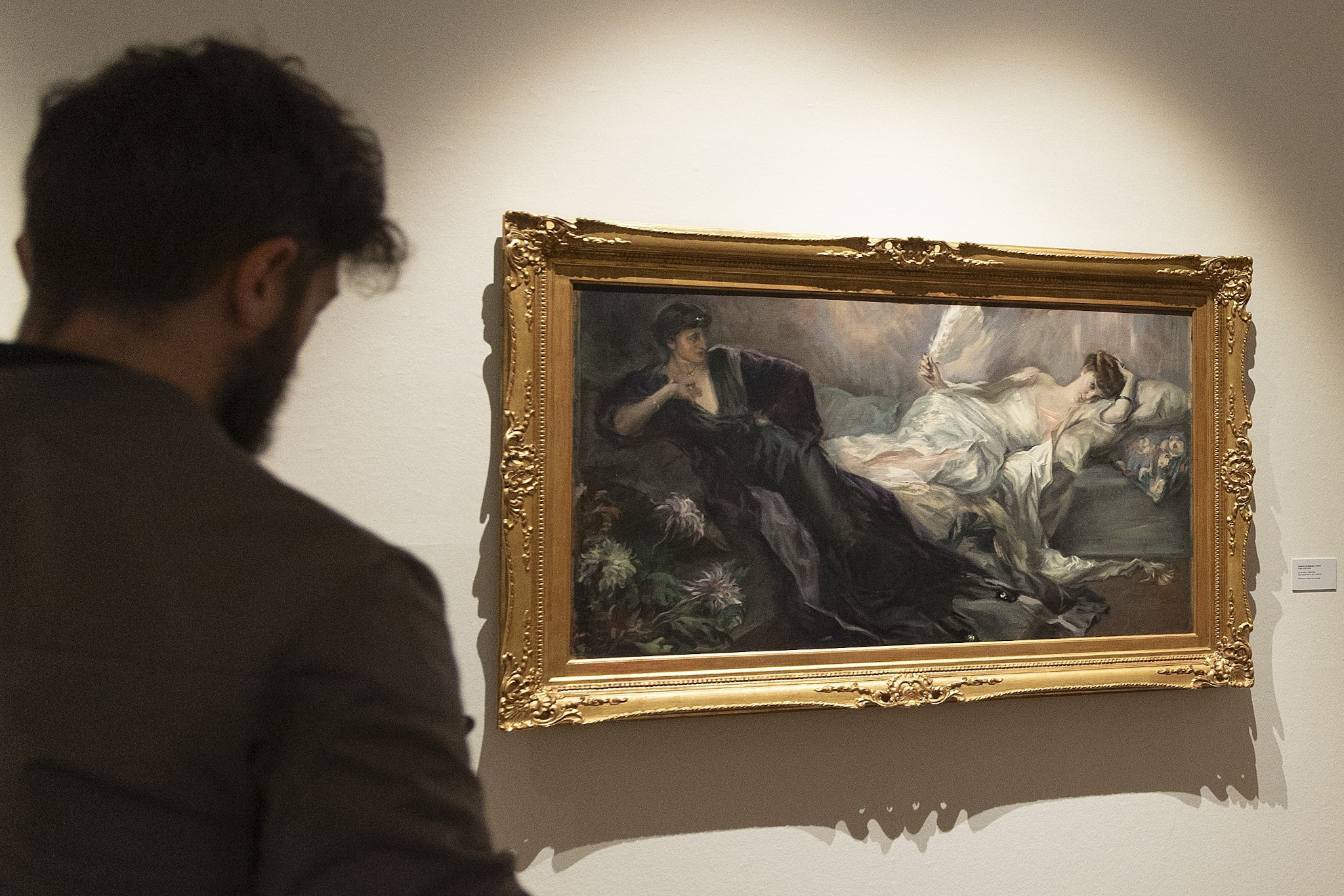Unicaja has loaned to the Museo Nacional del Prado in Madrid two paintings that are exhibited in 'Art and Social Change in Spain (1885-1910)', an exhibition that can be visited from tomorrow Tuesday, 21 May, until 22 September and which shows the impact of social changes in the art of the late nineteenth and early twentieth centuries.
Specifically, these are the oil paintings 'Víctimas de la fiesta' (1894), by Darío de Regoyos, and 'Enseñar al que no sabe' (1909), by Augusto Junquera, which are part of the collection of the financial institution.
The canvas by Augusto Junquera is usually housed at the headquarters of Unicaja in the Plaza de la Escandalera in Oviedo, and the one by Darío de Regoyos, in the same city, is on deposit at the Museum of Fine Arts of Asturias.
Víctimas de la fiesta' represents the moment prior to the skinning of one of the horses that was slaughtered in a bullfight, while in 'Enseñar al que no sabe' can be seen a scene of an open-air lesson given by Father Vinjoy to some children in the orphan asylum he founded in Oviedo.
The temporary loan of these paintings to the Museo Nacional del Prado, which are added to the nearly 300 that make up the exhibition, is part of Unicaja's support for culture and its artistic manifestations. In fact, the entity has already collaborated, with the loan of funds, in exhibitions organized by other institutions.
Exhibition
This exhibition, curated by Javier Barón, head of the Museo del Prado’s 19th Century Painting Department, is an opportunity to approach the artists' interpretations of the profound social change experienced in Spain between 1885 and 1910. After a long period of predominance of history painting as the main inspiration, it will be the subject matter of social content that analyzes the changes that took place in the country during this period.
The diversity of techniques and creative registers in the almost 300 works (many of them, not exhibited before) that make up the exhibition show the great variety of artists' responses to the challenge of representing the changes of the society of their time in aspects until then scarcely treated such as industrial work and that of women, education, illness and medicine, industrial accidents, prostitution, emigration, poverty and ethnic and social marginalization, colonialism, strikes, anarchism and workers' demands.
Although the origin of this exhibition project lies in the relevance of the Prado's collections of social painting, reflecting the production linked to the various National Exhibitions of Fine Arts, thanks to the generosity of nearly a hundred public and private lenders, visitors can admire outstanding works by Regoyos, Sorolla, Nonell, Gargallo, Picasso, Gris and Solana, among others.
Between the liberal governments of 1885 and 1910, Spain underwent decisive transformations for the modernization of the country, similar to what happened in Europe. Artists stopped dealing with historical matters to deal with the life of the moment, so that their works became eloquent testimonies of those changes.
Influenced by photography, Spanish painters sought objectivity in representation, adopting a naturalistic style, similar to that which had triumphed in France and other countries, but with a special identity in some works thanks to the study and vindication of Velázquez as a prestigious reference. Many of them were presented at the National Exhibitions of Fine Arts, where an important part was acquired by the State.
For this reason, the Museo Nacional del Prado holds the most important collection of social painting in Spain. Twenty of these paintings, most of them of large dimensions, constitute the core of the exhibition, the first that the institution has dedicated to this theme so relevant for its presence in its collections, but scarcely represented in its permanent exhibition and, therefore, insufficiently known. In addition to painting, the exhibition also includes sculpture and graphic arts, as well as photography and cinema, which played the most important role in shaping the image of the period.
Themes
The themes chosen to articulate the sections of the exhibition encompass different aspects of contemporary life, including those that, because of their lack of beauty, their supposed indecorousness, apparent triviality or seeming absence of interest, had barely been considered before. They include industrial and women's work, education, illness and medicine, workplace accidents, prostitution, emigration, poverty and ethnic and social marginalization, colonialism, strikes, anarchism and demonstrations demands. Other themes that, in contrast had a long tradition, such as agricultural labour, the work of seafarers, religion and death, were now seen in a new light and for this reason they are also present in the selection.
The exhibition analyzes the diversity of interpretations of all these themes, the relationship between the different artistic fields, such as photography, illustration and painting, and the crisis of the system of naturalistic representation following the triumph of its most notable exponents, such as the brothers Luis and José Jiménez Aranda, Vicente Cutanda, Joaquín Sorolla, Santiago Rusiñol and Ramón Casas.
Social art of the first generation flourished between the Paris Universal Exhibitions of 1889 and 1900, at which two Spanish painters, Luis Jiménez Aranda and Joaquín Sorolla, received the medal of honor respectively. Although it continued to be cultivated by other artists until 1910, naturalist proposals were replaced by others of a more expressive nature.
Simultaneously, the influence of Velázquez declined and was progressively replaced by that of El Greco among the innovating artists, who were also aware of the transformations that had taken place elsewhere in Europe. The first important example was Darío de Regoyos followed, after 1900, by Francisco Iturrino, Ricardo Baroja, Hermen Anglada-Camarasa, Isidre Nonell, Evaristo Valle, Joaquim Sunyer, Pablo Gargallo, Pablo Picasso, Juan Gris and José Gutiérrez Solana. Ignacio Zuloaga and Julio Romero de Torres also pursued new directos from markedly individual viewpoints that revealed more interest in certain aspects of the art of the past.



